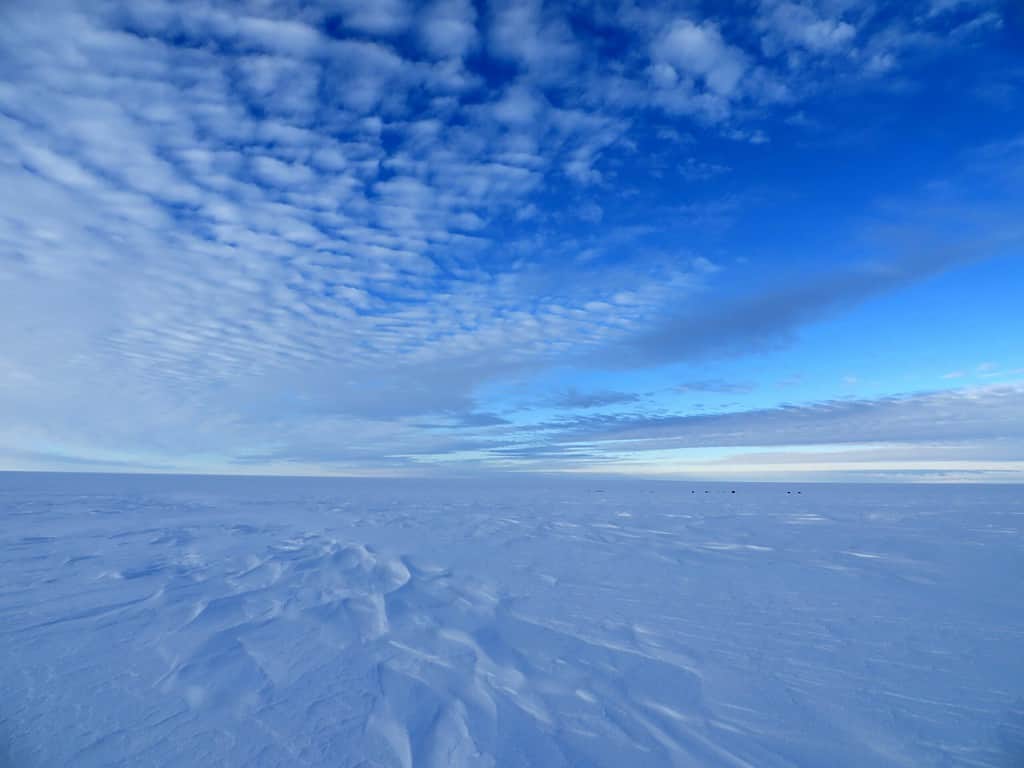The Amundsen Sea Embayment, one of the regions in West Antarctica, has lost more than 3,000 billion tons of ice in 25 years, according to a new study. This makes it the region that has changed the fastest in Antarctica and it’s currently the greatest contributor to sea level rise from the Antarctic Ice Sheet, the researchers from the University of Leeds said.

Located in West Antarctica, the Amundsen Sea Embayment was first discovered in 1929 by a sea captain who named it after Roald Amundsen, a Norwegian explorer. The area has 20 glaciers that play a key role in contributing to the level of the oceans. There’s so much water in the ice that if it melts, it would raise sea levels by a meter.
A team of researchers estimated the “mass balance” of the area. This is the balance between the snow and ice gained from snowfall and the amount lost through calving – the process through which icebergs break off of glaciers and end up in the ocean. If calving happens faster than snowfall is replaced, the area then loses mass overall.
“Scientists are monitoring what is happening in the Amundsen Sea Embayment because of the crucial role it plays in sea-level rise. If ocean levels were to rise significantly in future years, there are communities around the world who would experience extreme flooding,” Benjamin Davison, the study’s lead author, said in a media statement.
Looking into ice loss
The study found that the studied area in Antarctica experienced a net loss of 3,331 billion tons of ice between 1996 and 2021, which led to nine millimeters of sea level rise across the globe. To understand the scale of this, if this amount of ice was stacked in Manhattan, it would tower at 61 kilometers or 137 Empire State Buildings placed on top of each other.
Using climate models, the researchers found that the Amundsen Sea Embayment experienced both periods of heavy snowfall and snow droughts. Between 2009 and 2013, the region had a long period of low snowfall, shrinking the ice sheet. Meanwhile, in 2019 and 2020 there was heavy snowfall, lowering the region’s contribution to sea level rise.
Interested in the sea level contribution from West Antarctica? In my new paper, we revisited the impact of snowfall anomalies on rates of mass loss from the Amundsen Sea Embayment (ASE) https://t.co/Ah6f4pPhHB.
Thanks to co-authors & @ICASLeeds, @UniversityLeeds & @ESA_EO
— Ben Davison (@arctic_glaciers) March 20, 2023
Davison said changes in ocean temperature and circulation seem to be driving the long-term changes in the West Antarctic ice sheet mass. He said the team was very surprised to see how much periods of low or high snowfall could affect the ice sheet over two to five-year periods. He said more research was still necessary to understand these trends.
The ice loss from the Amundsen Sea Embayment has also included a reduction in the Pine Island Glacier, the researchers said. As it retreated, one of its tributary glaciers became detached from the main glacier and ice melting rapidly accelerated. The tributary glacier has now been named Piglet Glacier by the researchers so it can be easily identified for further studies.
“As well as shedding new light on the role of extreme snowfall variability on ice sheet mass changes, this research also provides new estimates of how quickly this important region of Antarctica is contributing to sea level rise,” Anna Hogg, a study author, said in a statement. “The Piglet Glacier accelerated its ice speed by 40%, as the larger PIG retreated.”
The study was published in the journal Nature Communications.






